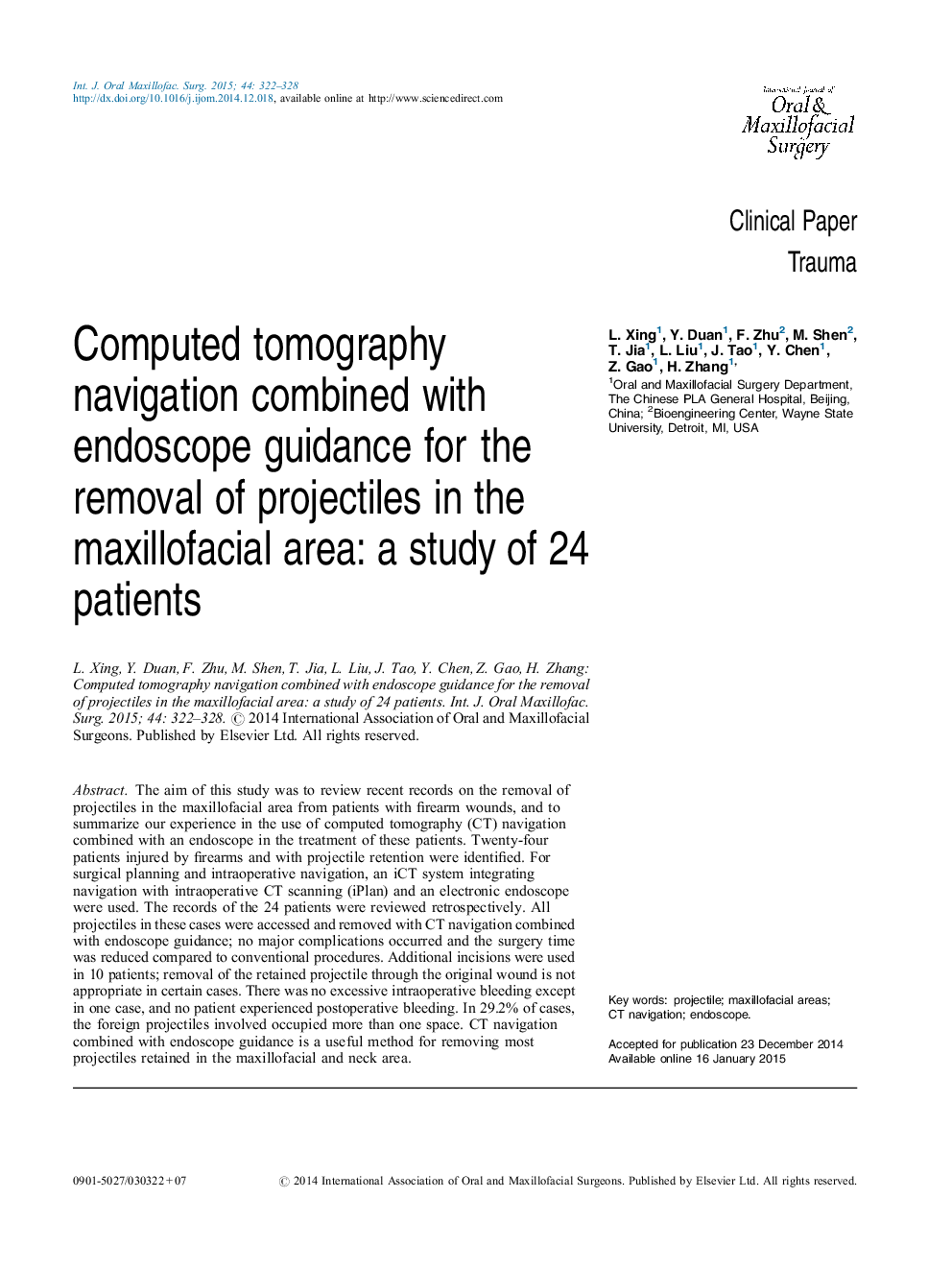| Article ID | Journal | Published Year | Pages | File Type |
|---|---|---|---|---|
| 3132192 | International Journal of Oral and Maxillofacial Surgery | 2015 | 7 Pages |
The aim of this study was to review recent records on the removal of projectiles in the maxillofacial area from patients with firearm wounds, and to summarize our experience in the use of computed tomography (CT) navigation combined with an endoscope in the treatment of these patients. Twenty-four patients injured by firearms and with projectile retention were identified. For surgical planning and intraoperative navigation, an iCT system integrating navigation with intraoperative CT scanning (iPlan) and an electronic endoscope were used. The records of the 24 patients were reviewed retrospectively. All projectiles in these cases were accessed and removed with CT navigation combined with endoscope guidance; no major complications occurred and the surgery time was reduced compared to conventional procedures. Additional incisions were used in 10 patients; removal of the retained projectile through the original wound is not appropriate in certain cases. There was no excessive intraoperative bleeding except in one case, and no patient experienced postoperative bleeding. In 29.2% of cases, the foreign projectiles involved occupied more than one space. CT navigation combined with endoscope guidance is a useful method for removing most projectiles retained in the maxillofacial and neck area.
